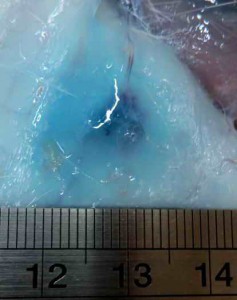The use of standard methods when studying allergenic properties of pharmacological substances especially newly synthetized, gives an opportunity to physicians to more rationally prescribe medication to patients and thereby reduce the number of allergic complications of medicinal etiology.
Materials of experimental evaluation of pharmacological substance that were obtained on the recommended program, might be included into the protocol of clinical trials, into the project of its medical application instruction and also in some cases may be used when deciding the fate of the drug together with pharmacological and chemotherapeutic data.
- General provisions
The term “allergenic properties” means the ability of a substance when administering into organism to cause a state of increased sensitivity (hypersensitivity, sensibilization). Th2-helper activation and production of cytokines IL-4, IL-5 and IL-13 followed by the synthesis of IgE-antibodies which have a high affinity to mast cells and basophils, lie in the basis of pathogenesis of the most severe allergenic complications which develop by the 1st type of hypersensitivity. Antigen reacts with IgE-antibodies fixed on mast cells, which leads to cell activation and secretion of mediators of allergy (histamine, serotonin, and etc.). According to the classification of P.G.H. Gell and P.R.A. Coombs, there are four more types of hypersensitivity based on other immune pathological mechanisms.
Types of hypersensitivity
- Anaphylactic type – reaction between cell-fixed IgE-antibodies (AB) and specific antigen (AG) followed by mediator release from target cells. This reaction type includes anaphylactic shock, angioedema, urticarial, certain types of bronchial asthma.
- Cytotoxic type – reaction of AB (IgM or IgG) with the components of cell membrane. Cell disruption occurs in the presence of the complement (hemolytic anemia, agranulocytosis, leukopenia, and thrombocytopenia).
- Allergic reactions associated with the formation of immune complexes in the blood or tissues and activation of the complement (Arthus phenomenon, serum disease, uveitis, medicinal fever, allergic vasculitis).
- Cellular type – reaction of sensibilized lymphocytes with specific AG. Mechanism of action by the type of the delayed-type hypersensitivity (DTH) (allergic dermatitis). Nowadays, cellular type of hypersensibilization refers to the immune pathological reactions.
- Direct stimulation of cell function by antibodies (stimulation of the receptor of thyroid stimulating hormone of the thyroid gland in thyrotoxicosis).
Mechanism of the development of allergic reaction depends on many factors – AG nature, doses, route of administration, multiplicity and duration of administration, presence of adjuvants, animal choice, physical and chemical structure of pharmacological substance, ability to bind with proteins in the organism and etc. Depending on this, allergic reactions develop by the “immediate” or “delayed-type”.
“Immediate-type” reactions develop quickly, during several minutes (1-20 min); antigen-antibody reaction in tissues and liquid tissue environments participates in their mechanism.
“Delayed-type” reactions – reactions between AG and sensibilized T-lymphocytes followed by the development (in 24-48 hours) of allergic inflammation. Different stages of allergic reactions correspond to “immediate” and “delayed-type” reactions: immunologic, pathochemical, and pathophysiological.
When choosing tests to check the pharmacological substances on allergenic action, we need to be guided by the following principles: informational content, economy, reproducibility, optimal combination of methods of allergodiagnostic in vivo and in vitro, use of such methods which would allow revealing different types of allergic reactions.
Assessment of the allergenic properties of drugs is performed according to the Manual for conducting preclinical studies of drugs. Under the editorship of Mironov A.N., Bunatyan N.D. et al., M., publishing house “Grif and K”, 2012, and based on the following tests.
- Reaction of general anaphylaxis (anaphylactic shock) on guinea pigs;
- Active skin anaphylaxis on guinea pigs;
- Conjunctival test on guinea pigs;
- Delayed-type hypersensitivity test (DHT);
- Method of skin applications;
- Degranulations of mast cells;
- IgE level assessment by ELISA method (in addition).
Study of allergenic properties is carried out according to OECD protocols on testing of chemicals:
| 406 | Skin Sensitisation |
| 442B | Sensitization: Local Lymph Node Assay: BrdU-ELISA |




